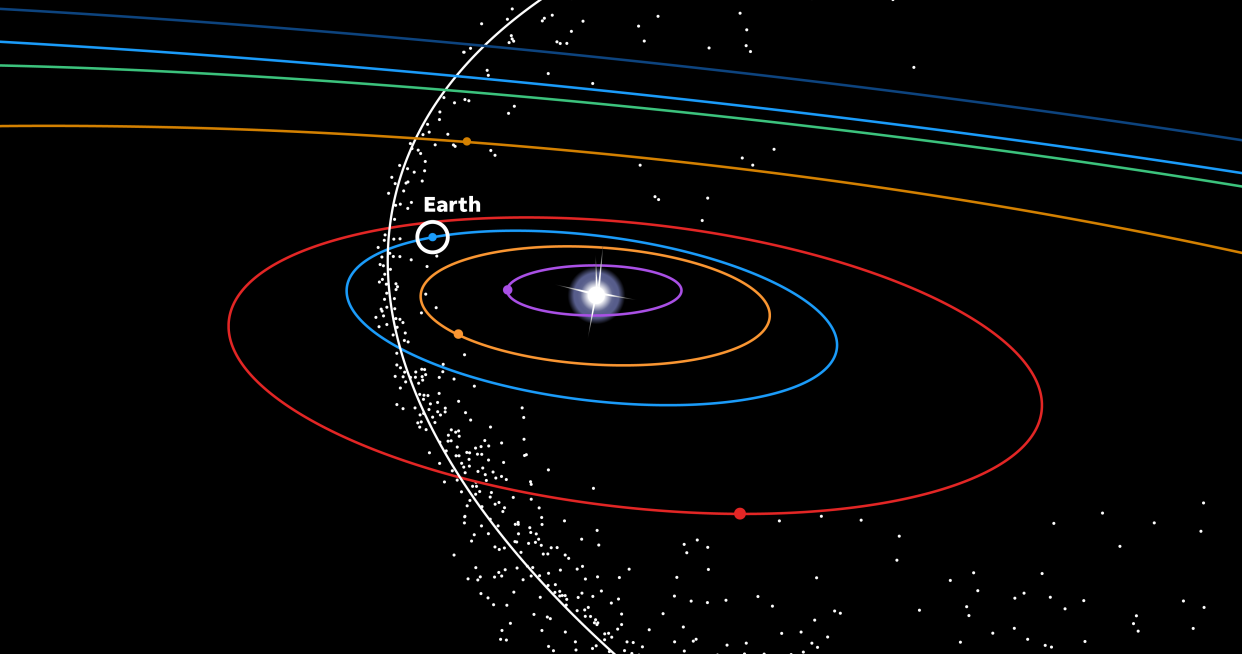The Perseid meteor shower is peaking: A visual guide on where, when and how to see it

The best summer meteor shower, the Perseids, will reach its peak this week, astronomers say.
The shower is famed for its brilliant, long-lasting rays of light and spectacular "fireballs," or bursts of light that stay longer than meteors, according to NASA.
The shower is active from July 14 to Sept. 1, but it's expected to peak Aug. 11, 12 and 13. The best views are from midnight to sunrise on each of those nights.
NASA says that this year the moon will be above the horizon during prime viewing hours, which makes it difficult to get the best view.
Perseids meteor shower
One of the best-viewed meteor showers in the Northern Hemisphere, the Perseids are known for their consistent and abundant meteors.
The best Perseid performance we know of occurred in 1993, when the peak rate topped at 300 meteors an hour, NASA says. What's best about the Perseids is that they can be enjoyed during summer's warmth, unlike the often nippy nights during the Leonids of November or Geminids of December.
The Perseid shower occurs every year when the Earth passes through the cloud of debris left by Comet Swift-Tuttle. The meteors actually come from dust and particles from the tail of the comet as Earth passes through it during the comet's orbit of the sun.
Where to see the shower
Can’t see our graphics? Click to reload.
What is it − meteor, comet or asteroid?
As they enter the Earth's atmosphere, meteors create a tail of debris as they disintegrate before reaching the ground. Meteors that that have made their way to the Earth's surface are called meteorites and are small pieces of an asteroid. Some have been traced back to Mars and the moon.
Most meteor showers are named after constellations, stars and even asteroids.
Calendar of meteor showers in 2023
Of the 12 meteor showers in 2023, seven are left for you to see.
How to best watch a meteor shower
To best prepare to watch a meteor shower, find a spot away from city lights, locate the radiant in the sky and get comfortable.
Embed link:
Where in the sky to find the remaining 2023 meteor showers
The sky maps below show the positions of the radiant (circle) in the night sky, where you can best view the meteors showers:
Orionids
The Orionid meteors come from the debris trail of Halley's comet, through which the Earth passes this time of year, and radiate from the Orion constellation (the shower's namesake).
The Orionids "are considered to be one of the most beautiful showers of the year," NASA says, and they're known for brightness and speed – they travel about 148,000 mph. "Fast meteors can leave glowing 'trains' (incandescent bits of debris in the wake of the meteor), which last for several seconds to minutes."
The American Meteor Society says this year's Orionid shower will peak Oct. 20-21.
The first observed Orionid shower was recorded in China in the year 288 when "stars fell like rain," Sky and Telescope reports.
Where to look
Southern and Northern Taurids
Taurid meteors tend to be slow-moving but sometimes very bright, EarthSky said. They'll produce about five meteors an hour and more when they overlap. The Taurids are well known for having many fireballs or exceptionally bright meteors. They are best viewed around midnight, when Taurus is at its highest in the sky.
The Taurids will be active from Sept. 10 to Dec. 10 this year. The Southern Taurids will peak Oct. 10, and the Northern Taurids will peak Nov. 12.
Where to look
Leonids
The Leonids appear to be coming from the constellation Leo the Lion (hence their name) in the east, but they will be visible across the sky.
Some of the greatest meteor showers ever seen have been the Leonids. In some years, they've been a full-fledged meteor "storm." The 1833 Leonid meteor storm included rates as high as an incredible 100,000 meteors an hour, EarthSky said.
The Leonids are often bright meteors with a high percentage of persistent trains, the American Meteor Society says. The peak in 2023 is Nov. 18.
Where to look
Geminids
The Geminid meteor shower radiates from near the bright stars Castor and Pollux in the constellation Gemini the Twins, EarthSky says. This is one of the Northern Hemisphere’s best showers. The meteors are plentiful, rivaling the August Perseids. The peak is Dec. 14.
Where to look
Ursids
The Ursids have gained popularity in recent years. They are typically a low-producing shower, or five to 10 meteors an hour, but have been known to produce large outbursts of 100 or more an hour. The meteor show is active from Dec. 13 to 24. The peak is Dec. 21-22.
Where to look
Quadrantids
The Quadrantid meteor shower is active from Dec. 28 to Jan. 12 and reaches its peak Jan. 3-4.
The Quadrantids are known for its bright fireballs, explosions of light and color that can persist longer than an average meteor streak, NASA said.
Where to look
This article originally appeared on USA TODAY: Meteor shower tonight: Watch Perseids peak 2023

